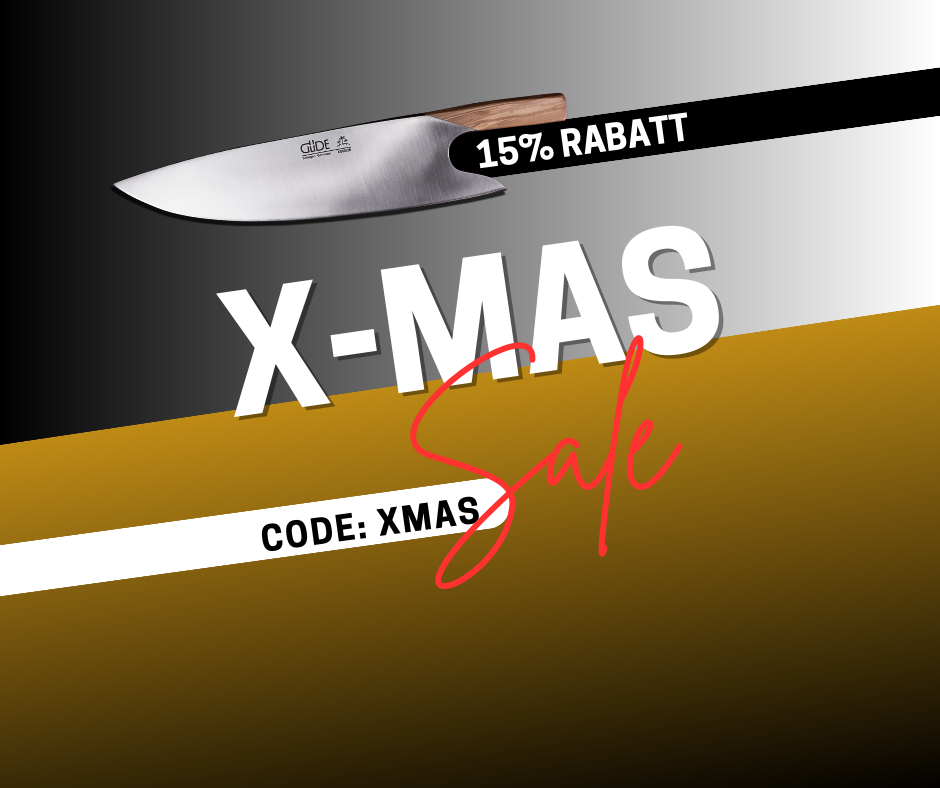Description
xThe Güde Delta sharpening steel.
- Handle material: Grenadilla wood
- Article No. D055/26
- EAN 4006214905564
When you hold a new Güde knife in your hands, it's a very sharp tool. But the more you use the knife, the more it loses its sharpness. This is true of all classic knives. That's why knives need a sharpening steel.
Faced with the choice between having a complete knife line but no sharpening steel, or a single knife with a sharpening steel, an experienced professional will always choose the latter. Because without a sharpening steel, even the best knife is useless.
A sharpening steel must be long enough to allow you to guide the entire blade cleanly. A sharpening steel should have a blade length of at least 26 cm. 32 cm is better – like the classic Güde sharpening steel.
Additionally, the oval sharpening steel is preferable to the round one because it offers a wider contact surface, thus ensuring a better sharpening effect. Anyone who tries to keep their knives sharp with other sharpening steels may quickly become frustrated. However, with good sharpening steels, keeping knives sharp is child's play.
Many professionals and amateur chefs have made it a habit, out of love for their tools, to run the knife over the sharpening steel before each use and, even years later, are delighted every time the sharp knife makes each cut seem effortless.
If you treat your knives with the same professional care before each use, you will be rewarded with the same satisfaction.
If you don't treat your knives professionally, you can expect their edge retention to deteriorate. Over time, the cutting angle and thus the functionality of the knives can be compromised. If necessary, after two, three, or five years, you should send your Güde knives back to where they came from: the Güde workshop. We are equipped to restore your knives to their usual cutting ability in a short time.
Many less experienced cooks don't use a sharpening steel at all, or don't use it properly, because they believe it's a science in itself. But sharpening knives is actually incredibly easy – provided you know how and have a bit of practice.
Loosely from the elbow
The professional holds the knife in the right hand and the sharpening steel in the left hand, and draws the knife about ten times across the steel, alternating between both sides of the blade. Maintaining the correct angle (15-20 degrees) is especially important. To get a feel for the correct angle, every Güde professional sharpening steel comes with a measuring stick that makes it easy to see what angles to set. Make sure that both sides of the knife are drawn evenly across the entire steel, from the shaft to the tip. Right-handed people should hold the sharpening steel in the left hand and the knife in the right hand. Left-handed people should simply swap the two tools.
Sure, some practice is important. But once you've realized how quickly and easily it is to sharpen a Güde knife with a Güde sharpening steel, you'll—like most professional chefs—swipe the knife across the steel before each use, spending only a few seconds.
Recently viewed
- €164,00 EUR
- €164,00 EUR
- (-0%)
- Unit price
- per
- €164,00 EUR
- €164,00 EUR
- (-0%)
- Unit price
- per
- €164,00 EUR
- €164,00 EUR
- (-0%)
- Unit price
- per
- €164,00 EUR
- €164,00 EUR
- (-0%)
- Unit price
- per
- €164,00 EUR
- €164,00 EUR
- (-0%)
- Unit price
- per
- €164,00 EUR
- €164,00 EUR
- (-0%)
- Unit price
- per
- €164,00 EUR
- €164,00 EUR
- (-0%)
- Unit price
- per
- €164,00 EUR
- €164,00 EUR
- (-0%)
- Unit price
- per
- €164,00 EUR
- €164,00 EUR
- (-0%)
- Unit price
- per
- €164,00 EUR
- €164,00 EUR
- (-0%)
- Unit price
- per
- Choosing a selection results in a full page refresh.



























